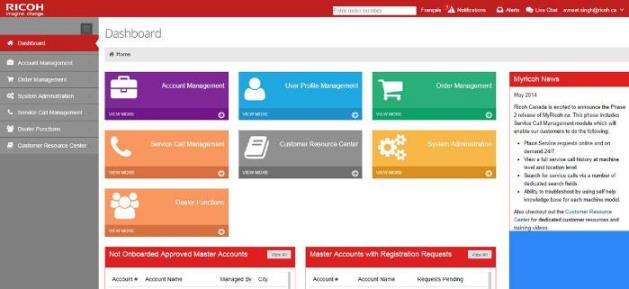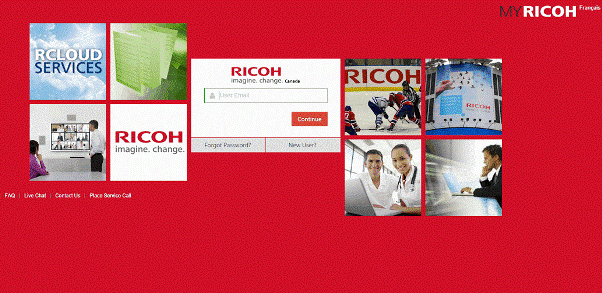Ricoh Canada is traditionally known as a manufacturer and distributor of printing and digital imaging hardware, but in recent years the company has been easing into the services and solutions space.
To communicate this transformation to its customers the company felt it was crucial to touch base with them in a key contact point that customers now expect businesses to reach them at. Unfortunately, Ricoh was using 1990s methods to reach out to a 21st century customer base, according to the company’s IT director.
Ricoh Canada traditionally accessed their account representatives by email, phone or a rudimentary Web portal.
“We did not have a fully-vetted, enterprise-grade, self-serve portal which we felt was what our customers were looking for,” said Nick Aloe, IT director for enterprise applications development at Ricoh Canada. “For example our sales reps were still largely making actual sales calls and customers were contacting us for service and supplies through the phone just like in the 1980s and 1990s.”
The situation was beneficial for both parties. For example, customer found it hard to contact Ricoh outside of the normal 9 to 5 working hours and there was no real-time tracking of transactions or orders.
Ricoh Canada gathered customer data with the use of an enterprise resource planning (ERP) solution and other systems. However, the systems prohibited customers from performing activities such as tracking orders and services.
(The new Ricoh portal dashboard )

The system was not integrated with supply so Ricoh personnel had to manually order supplies customers needed. Because customers could not track their orders or request in real-time, Ricoh personnel had to deal with constant calls from customers.
The process, he said, was way below the expectation of corporate and consumer customers who in the last five to seven years have become accustomed to contacting service providers over the Internet on their PC, smart phones and tablet devices.
Ricoh Canada also wanted a flexible solution that could easily integrate with existing systems and that could be developed and launched quickly.
“Our business and our customers have grown and changed so much in recent years that we’ve outgrown this model,” Aloe said.
Cloud-based vs. on-prem
Ricoh analyzed its workflow and consulted customers and decided that what the company needed was a “back-office gateway solutions” that streamlined workflow. It was also crucial that the solution provided customers with a simple way to reach Ricoh, convey their needs, track the progress of their transaction and this had be something available 24/7 and accessible through multiple devices.
The search for a solution came down to choosing between an on-premise system and a cloud-based system, said Andy Ambrozic, director of IT infrastructure and operations at Ricoh Canada.

“At first we were considering on-prem but realized that this would mean installing a lot of things like servers, firewalls and load balancers,” he said. “Cloud-based provided a simpler alternative.”
The company looked at several systems but finally decided on Azure, Microsoft Corp.’s cloud computing platform for building, deploying and managing applications and services, according to Ambrozic.
With Azure, Ricoh Canada didn’t need to build the whole infrastructure because deploying and managing applications and service were done through the network of Microsoft managed data centres. Azure provides both platform-as-a-service and infrastructure-as-a-service and it supports many different programming languages, tools and frameworks.
Ricoh Canada contracted Missisauga, Ont.-based business-to-business solution provider QLogitek, deploy Azure and help them develop custom services and applications that will integrate with existing systems.
The key focus of the project was “streamlining and automating supply and demand processes” providing mobile-capability and supporting Ricoh Canada’s developing e-business strategy, according to Isa Qureshi, executive vice-president of QLogitek.
In November last year, Ricoh Canada launched phase one of the portal which included a feature that allowed customers to track their orders.
Since then, the company has signed up to the system and automated more than 160 corporate customers.
Aloe said the system has shortened order and service turnaround times dramatically by streamlining and automating the customer business process. This in turn contributed to an increase in sales and productivity.
The decision to go with a cloud solution also lowered infrastructure cost and allowed Ricoh Canada to focus on enhancing customer engagement.
Ricoh Canada is now planning to add other functionalities into the system such as: supply ordering; equipment-meter input; and electronic invoicing.






